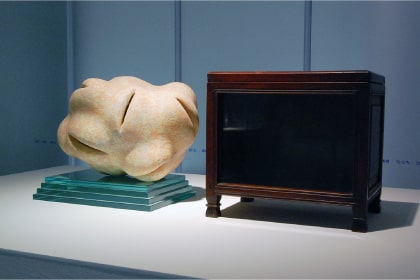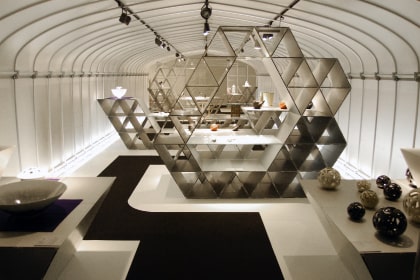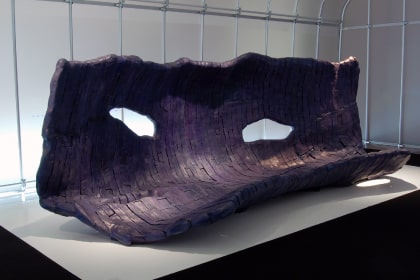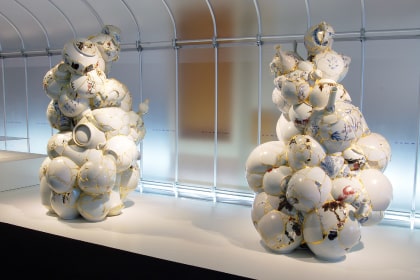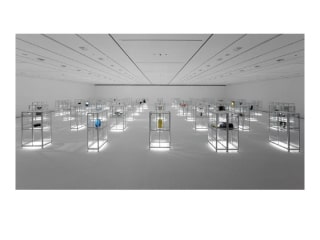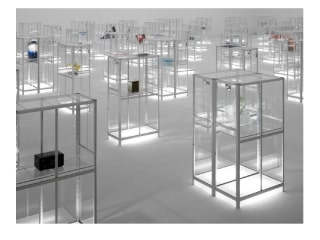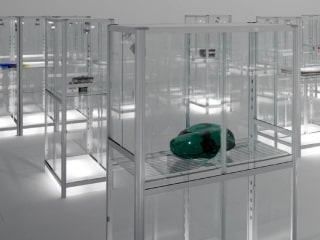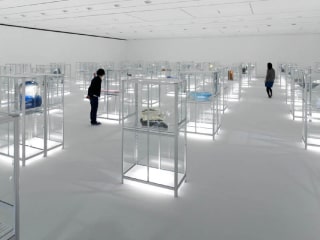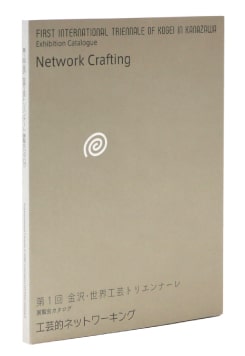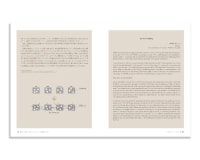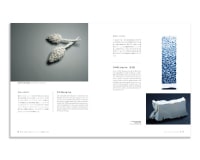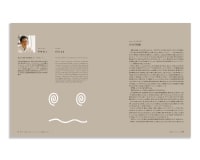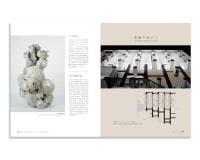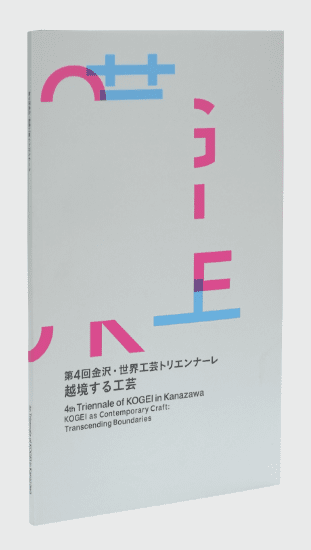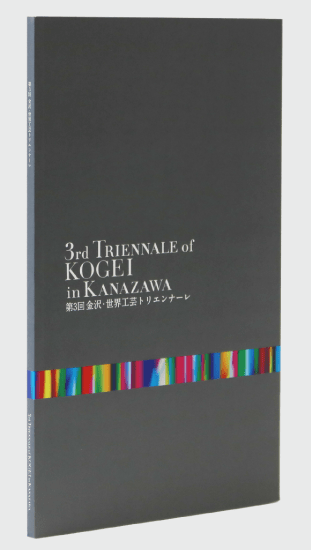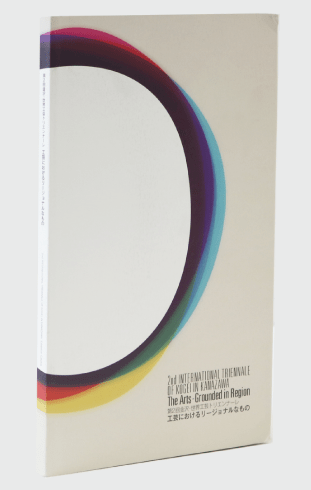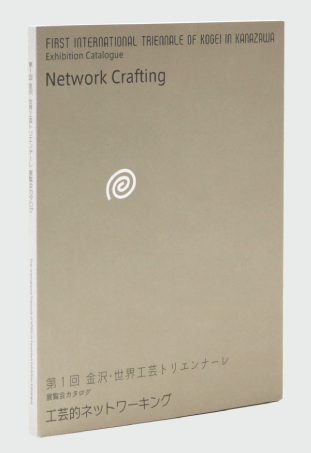
This first Triennale is headed by AKIMOTO Yuji, director, and comprised of exhibitions, curated by 5 curators, and a symposium. While inquiring how KOGEI can be reconciled and positioned in these changing times, the exhibition will introduce new generations of KOGEI to Kanazawa and the world.
Network Crafting
AKIMOTO Yuji
KOGEI today are technical aggregates that are also products of a certain technical complexion underneath which lies a self-referencing artistic concept. This in itself begs the eternal question, “what is craft?” ―a question that sits between the poles of either reinforcing or taking apart the concept of craft. In this sense, craft belongs squarely in the class of modern art.
If we call actions that lean toward reinforcing the concept of craft “fundamentalist” and those directed toward dissolution “polymorphic,” in fact the two types of movement are inverse sides of the same concept―the contemporary concept of craft. By and large, this is where the crux lies when crafts are considered to be sitting in a difficult position. But what we wish to do here is not define crafts but uncover the hidden potential in crafts. To achieve this aim, we need to remove the category of KOGEI, and look at the works freely without any preconceived notions.
How, then, do we proceed?
Let us start with a close-up look at the forms, techniques, and ideas that can be used to describe “crafting.” As we learned at last year’s exhibition The Current State of Kanazawa Crafts (*1), the key to distinguishing craft from that what is not craft is its form of production, including the techniques used―the artistry that is concentrated in the craft. This will also determine what kind of potential is inherent in the craft, and it is from this point of view that we may consider how crafts may be developed in the future. If we are able to remove from craft its self-referencing exclusivity to produce simply “craft technique,” what degree of creative freedom can these works imbue? That is the starting point for this exhibition.
As I stated above, this exhibition provides a forum for exploring the reach and potential of craftworking and “craft technique” (though with its own limits). It would make us happy if the visitors who come to see the crafts were to discover such new meaning in the works for themselves. The conditions under which techniques and materials that are well-matched and held to high standards are brought together in harmony resulting in a physical product can be called the world of craft. If you happen to cross paths with this special world, it is entirely possible for your perception to be freed, allowing you to see the world in a more realistic, more beautiful way that feels far more wonderful than usual. One experiences things directly; the details beckon to one’s senses. This is sensual release. We want to create the space for this kind of encounter with craft to occur.
In addition, we are exploring craft “nodes” (intersection points) and the networking they engender. Adjacent categories of architecture, design, and contemporary art are seen as forming a broad matrix inclusive of craft. We introduce artists’ works that create a new node through craft techniques. As such, the node encompasses approaches from a wide range of areas beyond craft. If a node is formed through craft techniques, it does not matter what category one applies―the content can all be called “crafted works.” Craftwork is thus defined in broader sense, considered in terms of the potential inherent in the ideas and techniques of crafted works.
On a practical note, in planning the event, to introduce diversity we enlisted the participation of craft researchers, modern art researchers and the craft artists themselves.
Two venues will be used―Rifare for the first venue and the People’s Gallery of the 21st Century Museum of Contemporary Art, Kanazawa, for the second venue. The second venue will only be used for a short period of time, so it will exhibit a “digest” of the works of artists displayed at the first venue. This time we contracted the venue design to the design firm “nendo.” Using the technique of putting makeshift tents into a vacant building creates a lighter architecture and a freer space. It frees us from lingering site problems that we’ve had to date (too solemn, troublesome to set up). From setup to takedown, everything can be done in a short time. It also offers the advantage of being compact and movable. The repurposing of existing objects breaks up the space, design-wise as well, and the site takes on a new form. This is a method similar to collage work in the visual arts. If it is the plight of things in a society of advanced consumption to pose a threat to artistic works, then the nendo-designed venue will also serve as a place of refuge in a time of stormy weather for the works of KOGEI on display.
*1: The Current State of Kanazawa Crafts
Period: 13 October to 25 October, 2009, venue: 21st Century Museum of Contemporary Art, Kanazawa people’s Gallery A
Artists:
AOKI Chie, CHANG Ching Yuan, CHOI Jae Wook, Chuemon, Derek AU, FUJIWARA Erika, HARA Satoshi, HASHIMOTO Masayuki, HASHIMOTO Yukio, HSU Meiing, HSU Yung Hsu, HUANG Wen Ying, IMAIZUMI Imaemon, ITABASHI Hiromi, KAMIDE Choemon-gama, KAMIDE Choemon-gama + MARUWAKA-YA, KAMIDE Keigo, KATO Yoshimasa, KIM Myung, KOSOGAWA Runa, KUMA Kengo, minä perhonen, MITSUKE Masayasu, NAKAGAWA Mamoru, NAKAMURA Shinkyo, NAKAMURA Takuo & C-Unit with SATO Taku, NAKADA Hiroshi, NAKASHIMA Harumi, nendo, NIISATO Akio, OGASAWARA Shin, OHGITA Katsuya, OHI Chozaemon (Toshiro), OHI Toshio, OKADA Naoto, OKADA Naoto + SARUYAMA Osamu, SAKAI Naoki, SYAKUNAGA Yo, SHIOYA Ryota, SHIROTANI Kosei, TAKAMURA Takashi, TAKEMURA Yuri, TANAKA Nobuyuki, TERAI Naoji, TOKUDA Yasokichi III, TSUJI Kazumi, TSUJI Kazumi + factory zoomer, UENO Takako, YAMAMURA Shinya, YEE Sookyung, ZHANG Ling Yun


